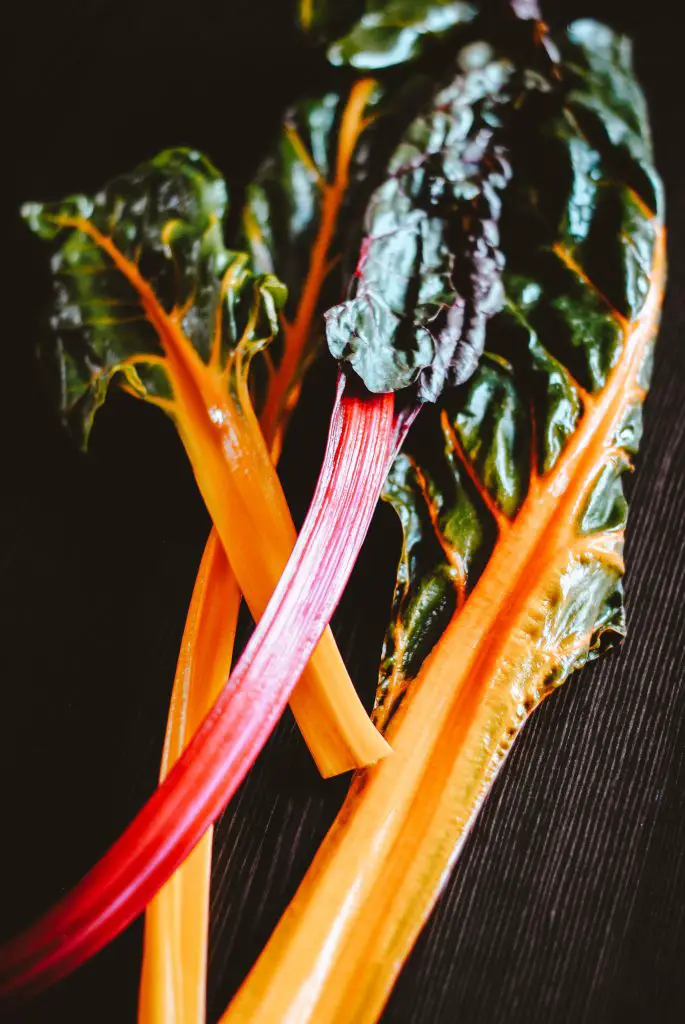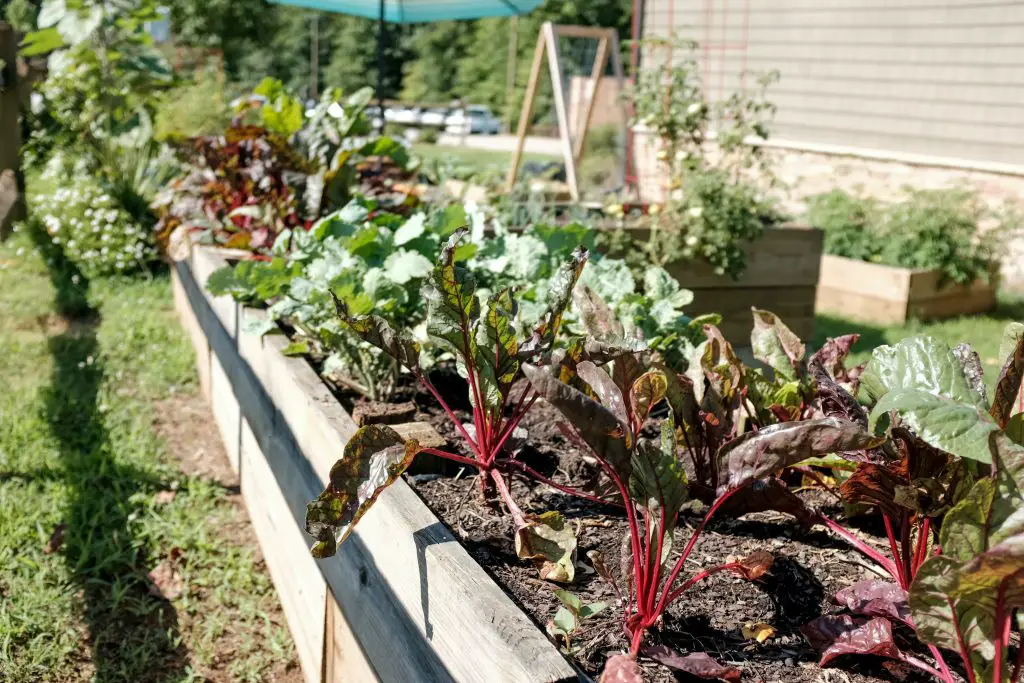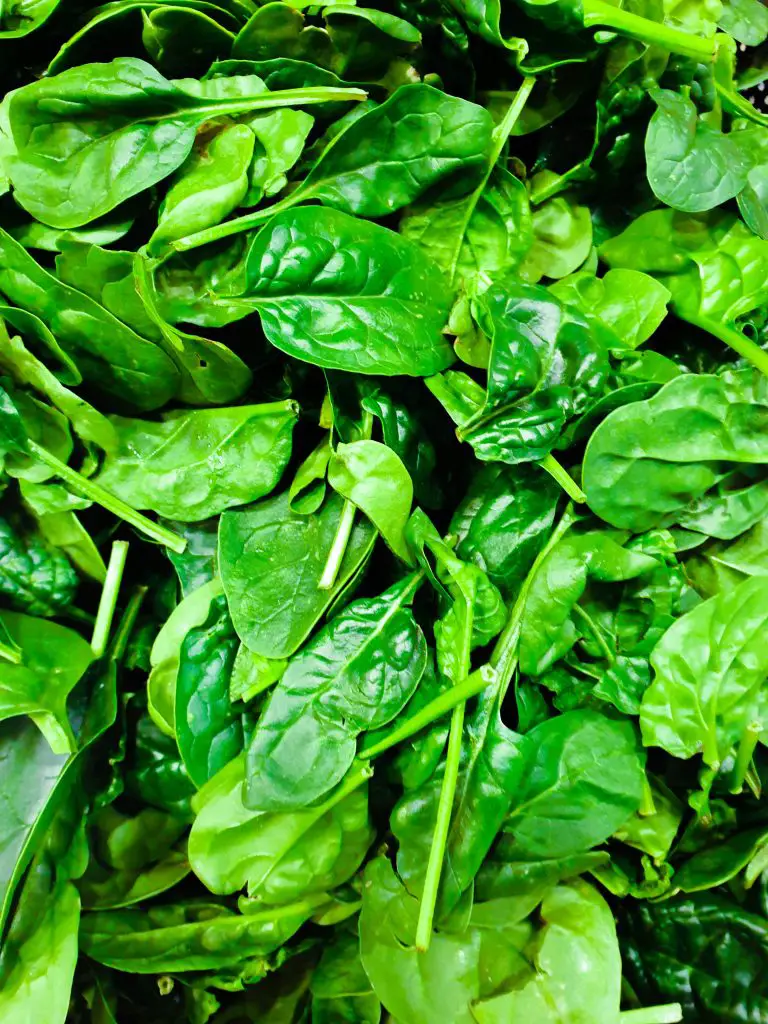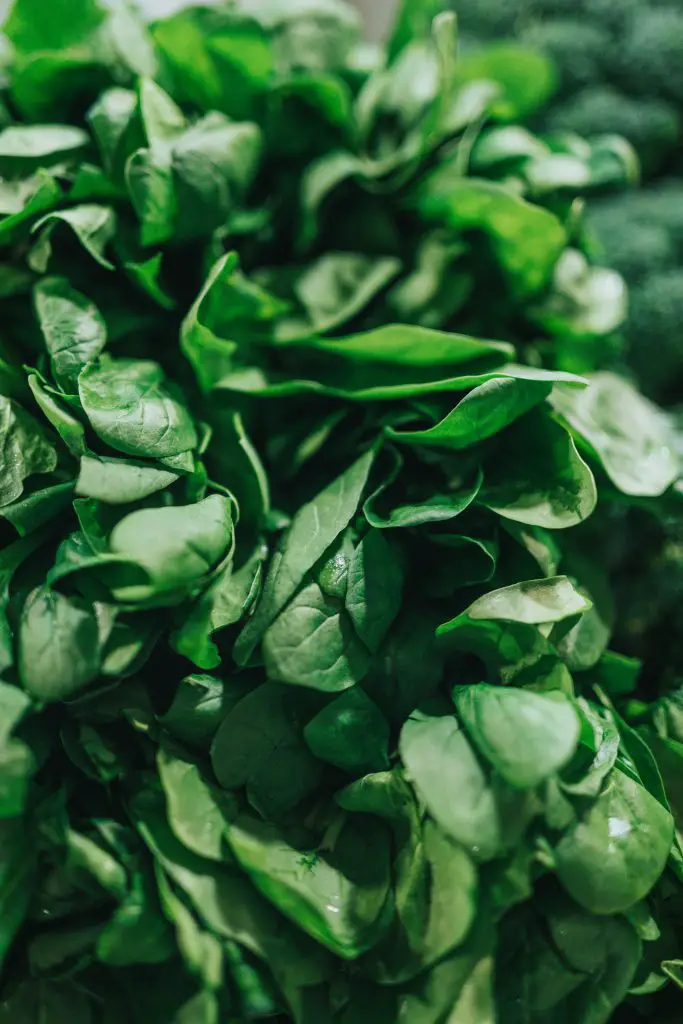Chard Vs Spinach: Are They The Same Thing? Swiss chard and spinach are both popular greens that are used widely in a range of dishes. They also have a similar appearance to each other and are often used interchangeably in some dishes. So are they really the same thing by a different name? If not what’s the difference?
Chard, which is also known as swiss chard, silverbeet, perpetual spinach, and beet spinach, is a distinctly different species to spinach despite the similar names and functions. Spinach belongs to the Amaranthaceae family whereas chard is closely related to beetroot and sugar beets.
The common names perpetual spinach and beet spinach come from the fact that chard lasts nearly 9 to 12 months in the garden before running to seed but has similar characteristics to spinach. Due to this long period of growth chard is one of the most productive vegetable plants in the garden producing copious amounts of green leaves for months on end.
The spinach plants on the other hand are ideally grown in the cooler parts of the year, usually in autumn or spring. It can also be grown in areas that have relatively mild winters. Unlike chard, spinach does not cope well with hot weather and will quickly run seed if the weather gets too warm which means that spinach really only lasts a few months.

Can Chard And Spinach Be Used Interchangeably In Recipes?
Chard and spinach have a very similar appearance and similar flavor to each other which means that they can be interchanged in a range of recipes without a significant difference. However, the one exception to this is when the leaves are used in recipes where the plant remains raw.
Generally, chard leaves are not as tender as spinach leaves that are often used in things like salads. One of the reasons why this is the case is because chard has significantly larger leaves that have veins and a central stems which are not dissimilar to celery.
This central stem is often removed from the leaves in some recipes add diced up separately because it generally requires a longer to cooking time. This is a factor that needs to be taken into account when using the two plants interchangeably.
Which Is Better For You Chard Or Spinach?
Both chard and spinach are extremely healthy options that would be recommended by most health professionals. The reason for this is both plants are high in a number of important nutrients such as Vitamin A and K, magnesium, and iron. Additionally, both plants also have extremely low calories and offer a high level of fiber.
Swiss chard is high in vitamin C and several important antioxidants, however, despite these excellent nutritional properties if I had to select one of the two plants to eat spinach would come in on top.
The reason for this is that spinach is much high in calcium levels and has almost 10 times the level of folate which is particularly beneficial for women that are planning to have children or are already pregant.

Which Plant Is Easier To Grow?
Of the two plants, chard is generally considered to be the easier one to grow for one specific reason which is that it is more tolerant of climatic conditions. This means it can be grown successfully in different parts of the year which means that there are less things that you can get wrong.
Additionally, if I was to select a leafy green to grow based purely on limited space in a garden chard would be number one on the list above all other leafy greens simply due to the sheer volume of produce that can be generated throughout the season.
Things such as spinach and lettuce readily run to seed within a few weeks which means that there is a need to constantly replant throughout the year. Additionally, once they run to seed they tend to get bitter and inedible very quickly.
However, in the case of chard traditionally it is possible to plant during spring and be able to harvest until the following spring when the plant will run to seed. During this period the plant will produce masses of leaves that can be picked continually throughout the season making this one of the most valuable crops if you are wanting to maximize the volume of produce coming out of your garden.
How To Grow Chard And Spinach From Seed?
Despite the fact that both chard and spinach are from completely different plant families the way that the plants are grown is generally quite similar. At the start of the growing season in early spring is the ideal time to plant both species.
To get the most out of the plants it is best to plant as early as possible in the season which means planting indoors around 4 to 6 weeks prior to the last frost. To get the plants going start by filling a seed tray with seed raising mix and then plant seeds at a depth of approximately 0.5 inches (1 cm).

If you were using a modular seed tray, with individual cells, it is ideal to plant 2 to 3 seeds per cell as this will ensure you have at least one plant per cell that comes up. If all the seeds germinate then thin to the strongest seedling.
To give the seedlings the best chance of success it is best to use a heated propagation tray because this produces the most consistent growing conditions to ensure rapid and strong germination. If you do not currently own a heat propagation tray we would highly recommend that you purchase if you live in a region with cold winters as it will make a huge difference.
The unit we recommend is the iPower Heating Seed Starter Germination Kit. The reason we like this particular unit is that it has a humidity dome to help control the climatic environment. Additionally, the unit features a replaceable modular see tray which is advantageous because this is the component that is most likely to wear out over time within the unit. Being able to replace this component will extend the life of the unit. To see the latest price click here on Amazon.
When the seeds have been planted they will typically take somewhere between 7 and 14 days to germinate and will need to spend approximately 4 to 6 weeks in the seed tray before they are large enough to be planted out into the garden.
During this period it is important that are water them regularly to ensure that the soil remains moist and is not allowed to dry out.
As spinach seedlings tend to bolt in hot weather it is likely that you will need to plant a second lot of seeds in late summer that can grow throughout the awesome to maximize your harvest throughout the year.
If you live in a region where the winters are relatively mild it is also worthwhile planting additional seeds throughout the autumn period as they can continue to be harvested throughout winter.

Planting Seedlings Out Into The Garden
Once the seedlings reach a reasonable size they can be planted out into the garden. When doing this the plants should be spaced out at a distance of approximately 1 ft for spinach and around 2 ft for chard because it is a larger plant.
When selecting a location it is generally preferable for it to receive at least 6 to 8 hours of sunlight per day. However, as both plants are leafy greens they can tolerate shade and in regions with extremely hot summer’s this shade can reduce the potential for bolting, particularly in the case of spinach.
In terms of soil conditions both plants ideally require rich moist but free-draining soil that has a slightly acidic pH. To ensure that the plants have all the nutrients that they need it is advisable to add a bag of compost to the soil before you plant.
Once the plant is in the ground it is also important to apply a thick layer of mulch to ensure that the plants remain moist. Additionally, I would highly recommend adding snail pellets around the plants as leafy greens are particularly susceptible to attack from slugs and snails.
Once the plants are in the ground, water them regularly too ensure that they have the moisture they need. After the plants have become established for several weeks you will begin to be able to take your first harvest from the plant.
To encourage the ongoing production of leaves it is important to regularly harvest from the plants throughout the season. The precise timing of the harvest is largely dictated by the size of the plant. When taking harvests it is important to leave at least a few leaves to allow the plant to recover quickly to ensure an going supply.
Relevant Articles
Beets vs Beetroot: Are They The Same Thing?
Does Silverbeet Need Full Sun?
Can You Grow Beetroot All Year Round?
Is A Beet A Fruit Or Vegetable?
